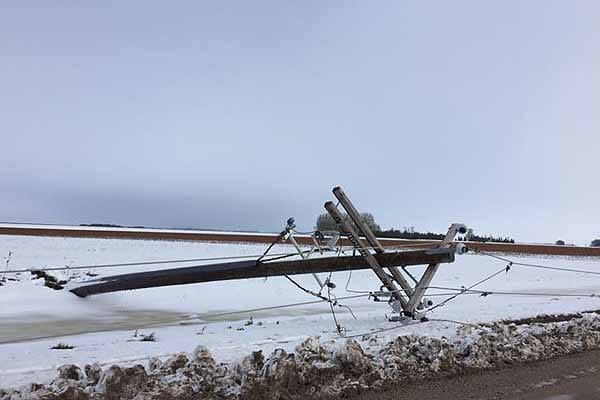The onset of winter in northern India has brought with it a familiar yet disruptive phenomenon: dense fog. Particularly in Delhi, the capital city, the fog has created significant challenges for residents and travelers alike. As temperatures drop, the fog has thickened, leading to a series of disruptions that have impacted daily life and transportation networks across the region.
The visibility in many parts of the city has plummeted to dangerously low levels, making travel hazardous. Reports indicate that visibility has dropped to as low as 50 meters in certain areas, leading to a surge in traffic accidents. The Delhi Traffic Police have issued advisories urging drivers to exercise extreme caution while on the roads. Many drivers have been forced to reduce their speed significantly, contributing to longer travel times and increased congestion.
In addition to road travel, the dense fog has severely affected air travel. Numerous flights have faced delays and cancellations as airlines struggle to operate under such low visibility conditions. The Indira Gandhi International Airport has reported significant disruptions, with many passengers left stranded or facing long waits. Airline officials have advised travelers to check their flight status before heading to the airport, as the situation remains fluid and subject to change.
Train services have not been spared either. The Northern Railway has announced the cancellation and rescheduling of multiple trains due to the fog. Passengers have been advised to stay updated on train schedules and to expect delays. The impact on rail travel has been particularly pronounced, as many individuals rely on trains for commuting to work or traveling between cities.
The foggy conditions have raised concerns beyond transportation. The air quality in Delhi, which is often a pressing issue, has been exacerbated by the weather. The combination of fog and pollution has led to a thick haze that envelops the city, prompting health advisories from local authorities. Residents are being urged to limit outdoor activities, especially those with pre-existing health conditions, as the poor air quality can pose serious health risks.
Authorities are taking measures to address the situation. The Delhi government has deployed additional resources to monitor traffic and assist stranded travelers. Emergency services are on high alert, ready to respond to any incidents that may arise due to the fog. Furthermore, the government is working with meteorological departments to provide timely updates and forecasts to help residents prepare for the changing weather conditions.
As the fog continues to linger, the impact on daily life is palpable. Schools have reported lower attendance rates as parents keep their children at home to avoid the hazardous travel conditions. Businesses are also feeling the effects, with many employees arriving late or not at all due to the disruptions in transportation.
Looking ahead, meteorologists predict that the fog is likely to persist in the coming days, with fluctuations in temperature contributing to the phenomenon. The situation calls for a collective effort from both authorities and residents to navigate the challenges posed by the weather. Public awareness campaigns are essential to ensure that individuals take the necessary precautions when traveling in foggy conditions.
In summary, the dense fog enveloping northern India, particularly Delhi, has created a complex web of challenges for transportation and daily life. With flights and trains facing cancellations and delays, and road visibility severely compromised, residents are urged to stay informed and exercise caution. The interplay between weather conditions and air quality further complicates the situation, highlighting the need for ongoing vigilance and preparedness as the winter season unfolds.


